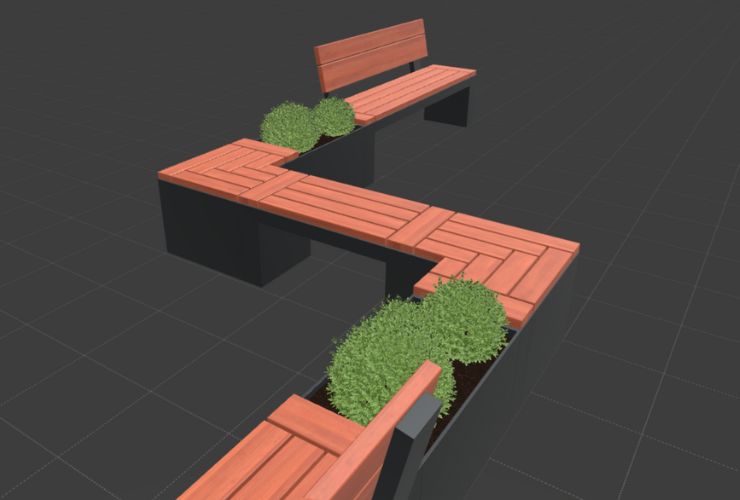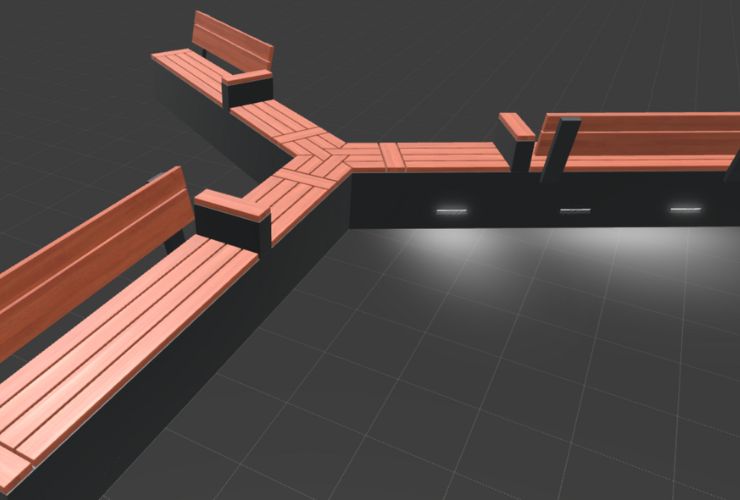Since the COVID-19 pandemic, emerging 3D online virtual shops enjoyed skyrocketing growth, evidencing a significant change in customer behaviour. This paved the way for new, revolutionary solutions, mimicking the “wild dreams” of famous sci-fi writers. The early adopters have already positioned themselves at the helm of the online retail business, generating new profit, urging the others to follow suit and add 3D online virtual shops to their offer.
3D virtual online shops blend elements of e-commerce, virtual reality (VR), and augmented reality (AR), thus creating an immersive shopping environment that can be accessed from anywhere in the world. It's like stepping into a game where the objective is to shop in the most interactive and engaging way possible.
And what about the facts and figures?
Data from Invesprco show that 95% of shoppers choose things visually. The problem with static 2D imagery is that it severely lacks the whole vision experience and interactivity. A lack of confidence in the product shakes the purchase decision. 3D virtual shops often mend this. Shopify confirms that the conversion rate increases by 40% with 3D visualisations, thus enhancing brand loyalty. Vividworks mentioned on average, retailers using 3D content on Shopify witnessed a 94% increase in conversion rates.
Also, a study from 2021 found that 40% of online shoppers are willing to pay more for a 3D experience. This indicates the possibility of expanding the average order size and value if the customer uses 3D. The returns, due to a product’s inadequacy in size, design, etc., are sharply reduced (by an estimated figure of 32%) if a shop uses a 3D version, and interestingly, alleviating returns has proven to be one of the most frequent reasons for financial losses retailers.
A study from 2021 found that 40% of online shoppers are willing to pay more for a 3D experience, indicating the possibility of expanding the average order size and value if the customer uses 3D.
By 2023, the global market for E-commerce with integrated 3D configurations had reached $11.47 billion, up from $3.65 billion in 2020. It will be an even hotter topic and growing trend in 2024, and it is expected to grow 20% per year in forthcoming years.
Looking closely, we can see that people are immersed in 3D shopping since 3D shops have 300% higher user engagement—people like to play, and businesses must leverage this to their advantage.
People immersed in 3D shopping since 3D shops have 300% higher user engagement.

How did we get to the 3D virtual shops, and more importantly, why?
Several factors have contributed to this change: putting the pandemic aside, the ascendance of Generation Z with their “virtual preferences” from solitary environments, the overall dominance of “m-everything” (mobile banking, mobile shopping) and the dissatisfaction with the lack of dimensionality and tactility have all paved the road to 3D virtual stores, which are a step beyond the old experiences of online shopping. They transform the usual interaction between consumers and products, profoundly changing the purchasing decision process. Personal customisation was an old option in the physical shop but is a new must for online stores, and successful companies have taken this to heart.
New generations of users changed their “virtual preferences”, dissatisfied with the lack of dimensionality and interactivity, paving the road for the adoption of 3D shops.
To be successful in the future, brands will have to provide an immersive virtual environment and experience. This experience can refer to the opportunity for customers to see the product in 3D, in all its volume, instead of just an unsatisfactory “flattened” 2D image. The capability of rotating the product image through 360 degrees along one, two or even three axes and using virtual and augmented realities to create even more immersive experience, like virtual showrooms with free customer movement (browsing virtual shelves), virtual trying of items on themselves (like trying clothes on their avatar), virtual interior design is critical. 3D virtual online shops are the “wedding of the best of both worlds” – the digital and the physical. Of course, it all ends with an easy purchase in a couple of clicks if the items are satisfyingly good. This speeds up the process and enhances the money flow and annual revenue for brands and businesses.
The capability of rotating the product image through 360 degrees along one, two or even three axes and using virtual and augmented realities created an immersive experience.
Present and future markets
The potential for greater market penetration and customisation is immense since the shopping zeitgeist of today is characterised by individuality; everyone wants their personalised, tailor-made experience, almost like in the days of actual tailor-made products in traditional shops. It’s clear that people miss that experience and quality of products, so the future demand for 3D e-commerce platforms is here to stay and continues to gain traction. Companies know that software solutions can be expensive. Still, the potential of lucrative markets forces them to differentiate themselves from the competition and find their niche by investing heavily in 3D virtual shops. Time and cost, large file sizes, and user education are the “challenge sides” of this business area.
The shopping zeitgeist of today is characterised by individuality; everyone wants their personalised, tailor-made experience.
Finally, this phenomenon is global. Everyone owns a mobile phone, and a great majority own computers, so the 3D virtual e-commerce movement is global, from Australia and the Pacific to North America, South America to Africa. As expected, early adopters are in North America, with this continent holding a 45% market share. Asia-Pacific closely follows the United States with the highest growth rate: Asia is expected to outgrow the United States in the next few years, while Europe is firmly holding ground in the middle with a more conservative approach.
The early adopters were in North America, and Asia-Pacific closely follows with the highest growth rate.
So, what to do? And when to do it?
Therefore, consumer spending in 3D virtual-enabled e-commerce is not just here to stay— it is here to touch the sky. The best time to act was yesterday. However, today is the second-best time to act and switch to 3D online shops.

Ready to take the next step?
Let's explore how our expertise can help you innovate and implement your vision in a digital world.
Reach out to us:ICodeFactory | Contact
